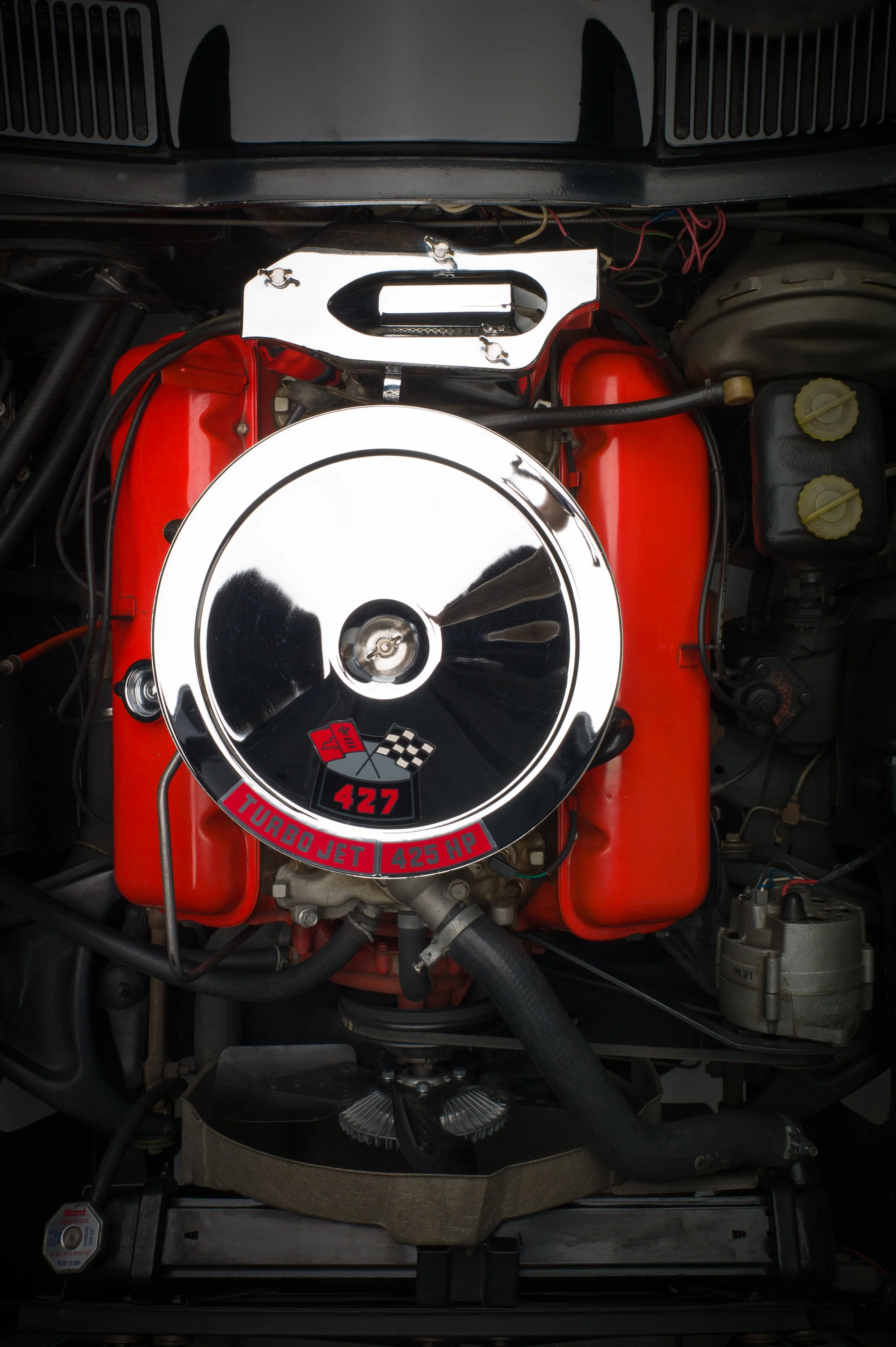1966 Chevrolet Corvette 427






1966 Chevrolet Corvette 427
In most ways, the 1966 Corvette was little different from the ‘65. They shared the same C2 platform underneath all Corvettes since 1963, and the basic sheetmetal of a 1965 redesign. A new chrome eggcrate grille, slightly different hood and additional exterior trim does help to differentiate the ‘66, but you have to know your Corvettes to do it at a glance.
- YEAR & MAKE - 1966 Chevrolet
- MODEL NAME - Corvette Stingray
- SERIES - 194
- MODEL/BODY/STYLE NUMBER - 37
- BODY TYPE - 2 Door, 2 Passenger Coupe
- BODY BY -
- # CYLS. - V8
- TRANSMISSION TYPE & NUMBER - 4 Speed, RWD
- WEIGHT - 3,055 lbs
- ESTIMATED PRODUCTION - 9,958 (All Models)
- HP - 425
- C.I.D. - 427
- WHEELBASE - 98″
- PRICE NEW - $4,607
But there was one, much more significant change that year, one you’d have to look very hard for to find. But it would be worth doing, because in the all-important street scene it would be the difference between winning and almost certainly losing, a little badge on the side of some models that read “427.” Only Chrysler’s “four-letter exciter,” the Hemi, could compete with that.
Chevrolet had added a big block to the Corvette’s arsenal with 1965’s 396, but in 1966 they introduced the 427, widely regarded as one of the finest high-performance engines ever built. You could order it in two states of tune, the 390hp, 10.5:1 compression L30 option code (the only way to get a Powerglide automatic transmission with the 427); or the L72.
Officially 425hp, GM had originally rated the L72 at 450hp before issuing an Engineering Change Recommendation on July 20, 1965, requesting that 450hp labelling be replaced with 425hp. Nothing about the engine changed–according to the ECR, it was a “management directive”: GM executives were growing concerned about the insurance ramifications of a 450hp engine, and made a paper change. Obviously, then, it was a whopper. As Car and Driver said, “Chevrolet insists that there are only 425 horses in there, and we’ll just have to take their word for it. Though we feel compelled to point out that these are 425 horses of a size and strength never before seen by man – horses as big as houses, with hooves as big as bushel baskets. When you have this many of those horses exerting their full force against the small of your back, you are profoundly impressed, and you will most likely lose all interest in counting anyway.”
Unlike the other engines available in Corvette, a 300hp and 350hp 327, and the L30, the L72 used mechanical valve lifters, the beginning of a long, long list of of equipment. Highlights include domed, forged aluminum pistons for 11.0:1 compression and a 780 CFM Holley 4150 four-barrel carburetor to feeding through an aluminum dual-plane intake manifold. On the other end, the L72 was equipped with cast iron, canted-valve “High-Performance” rectangle-port heads, leading to individual-runner cast-iron manifolds, essentially factory headers.
Despite the immense power and high compression, this exotic powerplant proved to be highly durable, at least in street use. All L72 Corvettes were equipped with one of two four-speed Muncie transmissions–and without airconditioning. Depending on the rear axle ratio and transmission, the car would run a quarter-mile deep in the high 12 second range. More than durable, it was even usable, if high strung and cold-blooded, requiring good gas, regular tune-ups and a lot of warming up.
The L72 1966 Corvette, equipped as this car is with 4.11 rear end and high-performance close-ratio M-22 transmission, was built for competition and held the title of Fastest American Production Car until the debut of thee ZR1 Corvette, 24 years later. For a quarter of a century, it was the most capable American vehicle on the road.
